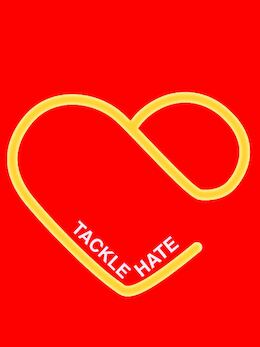Toolbox — For Training and Youth Work
All new tools in your inbox: Be the first to know about new tools for learning with our e-mail notifications.
Manual
Tackle Hate - digital guide
Guide in preventing and dealing with Hate Speech:
1 - insights of different types of online and offline identities
2 - reporting hate crime
3 - good practices for dealing with hate speech online and offline.
4 - recommendations
Aims of the tool
To offer to youth workers and youth relevant information about the consequences of hate crime, how to direct deal with it and how to prevent it.
Description of the tool
The present digital guide represents one of the main outcomes of the joint work of the project consortium represented by Netherlands (CAAT projects), Estonia (Nooruse Maja), Spain (Projuven) and Bulgaria (Alterntivi international), within the project of “Tackle Hate”. As said before this project goal is to provide youth workers with updated knowledge, tools and good practices in order to deal and prevent hate speech. Due to easy access to Internet, the anonymity being online, need of validation and identity crisis among young people – hate speech is blooming and it needs to be tackled. Youth workers role in this digital era has changed – youth workers need to face new challenges with the set of knowledge, skills and tools. The first chapter offered insights of different types of online and offline identities. In addition, we explained different types of collective identities. In the first chapter we also introduce challenges that comes with online identity, in hope to explain more specifically the reasons why hate speech is so current. The second chapter concentrates on reporting hate crime. As nowadays, there is more help and support for victims and witnesses of hate crime, which makes it much easier to report them and access help. We gave phone numbers and websites, where to report a hate crime. In addition, we also included ways how to report hate crime in social media websites. The third chapter offered some examples of good practices for dealing with hate speech online and offline. For example, going back to the basics and using materials like “Compass Manual for human rights education with young people.”The final chapter includes recommendations for dealing with hate speech and people who do hate crime. This digital guide highlights the types of online and offline identities, how to report hate crime and how to reach young people with this subject. We hope this digital guide offered some new insights and it could be used as a tool for tackling hate speech and crime.
The Digital Guide is available in English, Spanish, Bulgarian, Estonian and Dutch. We invite you to download it and enjoy the reading in our website - tacklehate.eu
Available downloads:
Disclaimer
SALTO cannot be held responsible for the inappropriate use of these training tools. Always adapt training tools to your aims, context, target group and to your own skills! These tools have been used in a variety of formats and situations. Please notify SALTO should you know about the origin of or copyright on this tool.
Tool overview

http://toolbox.salto-youth.net/2617
This tool addresses
Conflict Management
It is recommended for use in:
Strategic Partnerships
Behind the tool
The tool was created by
Unknown.
(If you can claim authorship of this tool, please contact !)
The tool was published to the Toolbox by
Andreia Bessa (on 15 October 2019)
and last modified
1 October 2019
Comments
No comments have been posted yet.
If you want to comment on this tool, you need to be signed in with your MySALTO account. Sign in now